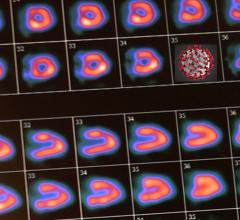July 6, 2015 - Medraysintell released its updated World Market Report and Directory on Nuclear Medicine, Edition 2015, in late June, providing a description and analysis of the latest developments in nuclear medicine. The 920-page document covers 335 radiopharmaceuticals and radionuclides and 160 companies and institutions active in nuclear medicine.
This new edition, written by experts, features 14 new products evaluated and 24 additional companies assessed. Additionally, it presents an overview of the major manufacturing centers and their capacities for producing radionuclides on a country and regional basis; the status of the molybdenum shortage issue from an economic point of view; and comprehensive comparisons of estimated radionuclide and radiopharmaceuticals pricing observed in key regions of the world.
Several important changes occurred in the past year that will shape the short term of global nuclear medicine. The strong growth of radiotherapeutics represented 8 percent of the total nuclear medicine market in 2014, versus 4 percent in 2013, driven by the success of Xofigo (Bayer). It is expected that radiotherapeutics will represent over 50 percent of the $24 billion nuclear medicine market in 2030.
In radiodiagnostics, the recent developments in gallium-68 make the year 2015 a milestone for the development of this technology, which in the next five years will lead to a completely new positron emission tomography (PET) environment. It seems that the future of radiodiagnostics will entirely be based on technetium-99m for single-photon emission computed tomography (SPECT) and on fluorine-18/gallium-68 for PET.
The conventional pharmaceutical industry has gradually become interested in nuclear medicine with some recent mergers and acquisitions activity: Bayer acquired Algeta; Sun Pharmaceutical Industries acquired Pharmalucence; Otsuka Pharmaceuticals entered into a global licensing and collaboration agreement with NuView Life Sciences; Norgine entered into a partnership with Navidea; and most recently, the pharmaceutical group, Ipsen, acquired OctreoPharm Sciences. In addition, the market saw some major consolidations, with AAA acquiring Atreus and IHS acquiring IBA Molecular North America to merge with their Zevacor.
The global market for nuclear medicine reached $4.3 billion in 2014 compared to $4.1 billion in 2013, exhibiting growth of 5 percent. Without the exchange rate effect against the U.S. dollar, the market would have reached $4.5 billion, and thus would have showed growth of 10 percent versus 2013. Presently, the global nuclear medicine market is rather fragmented, with nearly 70 companies selling radiopharmaceuticals on a regular basis. Three companies control almost half of the world market, while 56 firms share 14 percent of the market. Though nuclear medicine is not a recent science, the past years have witnessed the emergence of new radionuclides, and more than 35 companies are involved in research and development but are not yet selling radiopharmaceuticals.
New opportunities lie ahead in the nuclear medicine landscape. This potential has been identified not only in the radiodiagnostic area, but most notably in therapeutic radiopharmaceuticals, with the first products scheduled to reach the market before the end of 2020. Opportunities exist for larger groups or investors to finance such development, to merge with key partners and/or to acquire companies.
For more information: www.medraysintell.com


 August 03, 2023
August 03, 2023 








